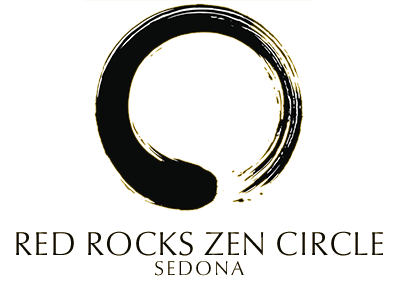The Dharma and Zen Poetry
– A Dharma Talk by Deirdre Eisho Peterson
At the Zen center in New York, we often have a text or sutra as a focus for a study period. We recently were studying something a little different, which is the poetry of Zen, and it has been a real pleasure to read these beautiful poems and haiku. I wanted to talk a little about some of these poems and explore what they offer us in our practice.
What makes a poem a Zen poem? In many cases the poems were written by Zen monks. But there are other beautiful Zen poems written by those who studied and practiced The Way as lay people. To me the unique Zen flavor of these poems comes not from whether or not the writer was wearing a monastic robe, but from how their writings convey the essence of Zen teachings in poetic form. The poems show the realization of their writers in the profound truth expressed in simple and direct language.
The Zen poets we are talking about lived in China, and later in Japan. The span of time involved is a long one. For example, Han Shan, also known as Cold Mountain, is one of the best-known of the Zen poets. The dates of his life are hazy, but scholars generally place him in China in the 8th century, so about the time of the early Middle Ages in Europe. Towards the other end of the time spectrum, almost 1000 years after Han Shan, is the beloved Japanese poet Ryokan, who was writing his verses about 200 years ago.
A good number of these Zen poets lived solitary lives as hermits or as wanderers – they left their monastic communities to live what they felt was a more authentic Zen life, with fewer comforts and fewer people, a simpler life with more closeness to nature. We see this intimacy with the natural world in their writing: a lived-in familiarity with birds and grasses, the cold of winter, the starkness of high mountains. Their poems suggest that all we need to know of the Dharma is revealed in nature, if we have eyes to see.
Here is the poet Ikkyu, writing in 15th century Japan:
Every day priests examine the dharma
And endlessly chant complicated sutras
Before doing that, they should learn
How to read the love letters sent by the wind and rain, the snow and the moon.
What struck me in reading these Zen poems was how much they are filled with what are known as the Three Marks of Existence. The Three Marks, or Three Truths, are a kind of foundational underpinning for Buddhist teachings – they are impermanence, suffering, and what is called ‘non-self’. In other words, that life has suffering and dissatisfaction; that things that come into existence will pass out of existence; and that there is no separate and unchanging self amidst this sea of change.
While we can talk about these three truths separately, in fact they are tightly interwoven. For example, in Zen poems the awareness of impermanence is often closely interwoven with the suffering that this impermanence can bring, the sadness or poignancy or loneliness we experience in a world that is passing.
Ryokan writes:
No bird above these wild hills
Garden leaves fall one by one.
Desolate autumn winds
A man alone in thin black robes.
The poets have a keen sense of the passage of time, of the sickness and old age and death that is part of conditioned existence and that gives the world its shimmering beauty as well as its sorrow.
Han Shan writes this:
The peach blossoms would like to stay through the summer
But the winds and moons hurry them on and will not wait.
And the Japanese poet Issa writes this haiku:
All around my house
Pond frogs, from the beginning
Sang about old age.
What we find in these poems is not denial of the pain of loss, nor do we find a cold and austere detachment. Instead, what we find is a perspective that is very real and very human. As Zen practitioners we may come to have a deep sense of impermanence, but as humans we still grieve deeply. The Japanese poet Issa, known for his haiku and journals, writes poignantly about this in his narrative, The Spring of My Life. Issa was a man intimately acquainted with the pain of loss; he watched all of his three children, and then his wife, die of various causes. He writes this about the death of his daughter: “How can I, her father, stand by and watch her fade away each day like a perfect flower suddenly ravaged by rain and mud? Finally, at midsummer, as the morning glory flowers were closing, her eyes closed forever. I saw her mother’s heartbreak but knew that tears were useless, that water under the bridge never returns, that scattered flowers are gone forever. And yet nothing I could do would cut the bonds of human love.”
And then his haiku:
The world is a dewdrop
A dewdrop
And yet, and yet …
The poets also find their way to express the mystery that is at the heart of the Third Truth of Existence, which is that there is no separate unchanging self. This sense of no-fixed-self is conveyed through the poets’ direct, simple language, in which there appears to be no ego operating, but just the direct experience. The writers have become transparent.
Here is a well-known verse written by Li Po, a Chinese poet from about the same time as Han Shan:
We sit together, the mountain and me
Until only the mountain remains.
Ryokan expresses it this way:
The winds have died, but flowers go on falling.
Birds call, but silence penetrates each song.
The Mystery! Unknowable, unlearnable.
So we can see how much the Zen poems are flavored by a deep intimacy with the Three Truths.
Another defining element of this poetry is that it conveys a sense of depth, of deep stillness that is there in the midst of change. We could experience it ourselves, as a silent presence that underlies the arising and passing away of phenomena.
The Japanese poet Basho writes this:
Lonely stillness
A single cicada’s cry
Sinking into stone.
We can see from these writings that these poets cultivated a deep inner stillness, and lived their daily life to be aware and awake, listening deeply, in touch with both inner and outer stillness.
The contemporary teacher Eckhart Tolle, in The Power of Now, has some insights on this sense of stillness and presence. He writes this: “Presence is needed to become aware of the beauty and sacredness of nature. You have to put down your personal baggage of problems, of past and future; otherwise you will see but not see, hear but not hear. Your total presence is required. Because beyond the beauty of the external forms, there is more here: something that can not be named, some deep, inner, holy essence. It only reveals itself to you when you are present. Could it be that this nameless essence and your presence are one and the same?” ~ This is a good question to explore. ~
While it seems most of the Zen writings express the poets’ experience of the natural world, sometimes the poets also speak to us directly, as our teachers, encouraging us to get to what is important.
In his usual unpretentious style, Ryokan says this:
My hut lies in the middle of dense forest
Every year the green ivy grows longer
No news of the affairs of men
Only the occasional song of a woodcutter
I have nothing to report, my friends
If you want to find the meaning, stop chasing after so many things.
Han Shan advises this:
When men see Han Shan
They all say he is crazy
And not much to look at
Dressed in rags and hides
All I can say to those I meet
“Try and make it to Cold Mountain.”
In reading Han Shan, its important to remember that Cold Mountain is both a literal geographic place, the poet himself, and also the enlightened mind. Thus he can write on multiple levels of meaning, “try and make it to Cold Mountain.”
He also writes this:
Cold Mountain is a house
Without beams or walls
The six doors left and right are open
At the center, nothing.
(It’s worth noting that the six doors here are referring to the six sense perceptions.)
Through his poetry, the Cold Mountain poet extends an invitation to us. That invitation is to slow down and become still. In doing so we ourselves can experience the mind of Cold Mountain. He writes:
I climb the road to Cold Mountain
The road to Cold Mountain that never ends
Who can leap the world’s ties
And sit with me among white clouds?
There are a good number of people who are not involved with formal Zen practice but who enjoy reading the haiku and verses of the Zen poets. I know that I liked to read them long before I started practice.
But all of us are here in the zendo because we are looking to live and experience the teachings, not just because we like reading poetry. So as Zen practitioners the poems speak to us in a different way. They remind us that times passes relentlessly by, and we should not put off practice until some vague time in the future when it will be more convenient. The poems inspire us to connect with the natural world, because nature can be a portal out of the world of thinking and doing and into the world of being. The poems remind us a way of experiencing the world, of being in the world, that is easy to lose sight of. They encourage us to slow down and be present to ourselves and to the world around us.
The poems, in a sense, are messengers. And I encourage you to see what message these poems speak to you.

